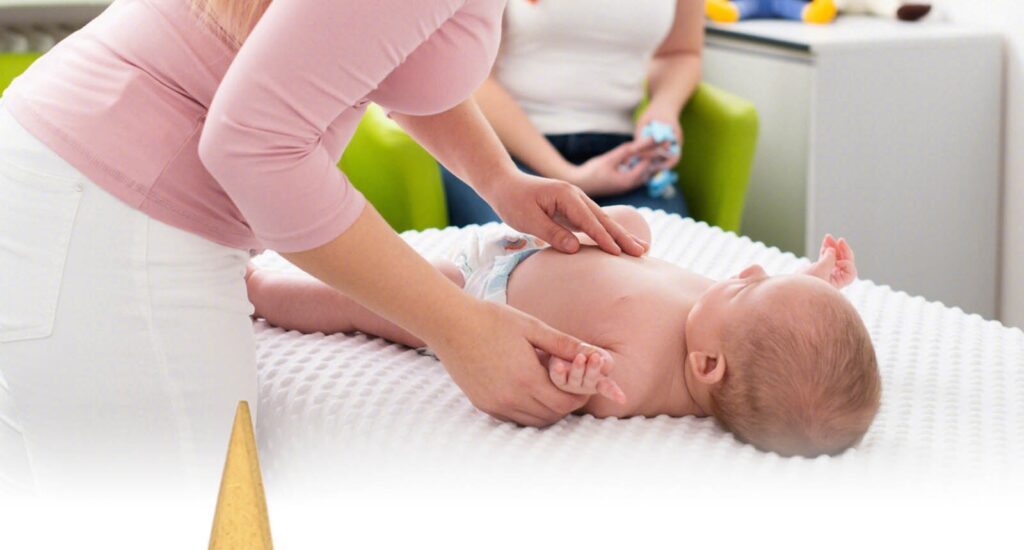
In China, Gua Sha is a widely recognized and commonly practiced form of home care. It is often used to treat children for conditions such as fever and cough. However, while Gua Sha for children has gained international recognition in recent years, its application in pediatric care remains rare and even controversial in many Western countries.
As more Chinese families bring this traditional technique abroad, it has begun to spark curiosity and concern among Western parents. This raises an important question: How can we apply traditional Gua Sha to children in a safe and scientifically informed way? That is the focus of today’s article.
Understanding Pediatric Gua Sha for Children from a Traditional Chinese Medicine (TCM) Perspective
Like many aspects of Chinese culture, Gua Sha is deeply rooted in the theory of yin and yang. According to Traditional Chinese Medicine, children are considered “pure yang”—full of energy and warmth—making them especially vulnerable to external “cold” influences that can lead to colds, fevers, and congestion.
From this viewpoint, Gua Sha is believed to help “support the righteous and dispel the evil,” making it a common remedy for early-stage colds, fever, food stagnation, or abdominal bloating in children.
However, it’s important to emphasize that Gua Sha is not a cure-all and should not replace medical treatment. It should be viewed as a complementary therapy and only used after consulting with a healthcare provider.
Western Concerns and Cultural Misunderstandings About Gua Sha for Children
This topic brings to mind a film centered on cultural misunderstandings surrounding Gua Sha. In the story, a Chinese grandfather living abroad uses Gua Sha to treat his grandchild’s cold. While this is a common practice in China, it led to serious consequences abroad.
When the child went to school, teachers noticed the red marks and bruises left by the treatment (called sha, a normal reaction to Gua Sha). Mistaking them for signs of child abuse, the school reported the incident to the authorities, triggering a complex legal and emotional ordeal.
This story highlights the cultural divide and common concerns such as:
- Could Gua Sha damage a child’s skin?
- Is it truly safe and reliable?
- Is there any scientific evidence supporting pediatric Gua Sha?
Let’s explore these questions one by one.
- Addressing Common Questions About Gua Sha for Children
Can it harm the skin?
Gua Sha may cause temporary skin marks or mild bruising, which typically heal within a week. - Is it 100% safe?
No treatment is completely risk-free. Gua Sha should only be used after understanding the child’s health condition and ideally under professional supervision—even for adults. - Is there scientific backing?
Scientific studies on Gua Sha are currently limited, particularly regarding its use in children. Most existing research focuses on adult applications such as pain relief, beauty, and muscle recovery.
A Practical Guide: Pediatric Gua Sha Safety Manual for All Parents
We’ve compiled a safety manual for pediatric Gua Sha to help parents apply this technique responsibly, regardless of cultural background. It covers key aspects such as age suitability, tools, techniques, and aftercare.
✔ Recommended Age and Frequency
- Suitable for children over 3 years old.
- Should be performed by a trained professional.
- Frequency: No more than 3 times per week, based on the child’s condition.
✔ Tool Selection
- Use smooth, gentle tools such as buffalo horn, silicone, or ceramic.
- Avoid hard materials like quartz, which may contain micro-cracks and irritate sensitive skin.
✔ Areas and Technique
- Recommended areas: Back, shoulders, neck, arms, and calves.
- Technique: Use light pressure; keep the child comfortable and relaxed.
✔ Use of Oils
- Natural plant-based oils like coconut oil or baby oil are ideal.
- These reduce friction and prevent skin irritation.
✔ Environment and Aftercare
- Ensure the child is in a warm, well-ventilated room.
- After the session, wipe off sweat, keep them hydrated, and allow for rest.
When to Avoid Gua Sha in Children
Gua Sha should be avoided under the following conditions:
- Persistent high fever
- Severe weakness or uncontrollable crying
- Skin conditions such as eczema or open wounds
- Unsupervised use by parents following internet tutorials
Tradition Meets Modern Caution: The Right Way to Use Gua Sha for Children
When your child is unwell, always seek medical attention first. Gua Sha can be a gentle, low-risk home remedy—but it must be used wisely. It is not a universal solution, and misapplication may lead to unintended harm.
By combining traditional knowledge with modern caution, we can preserve the benefits of Gua Sha while ensuring it is practiced safely—especially when it comes to the well-being of our children.

